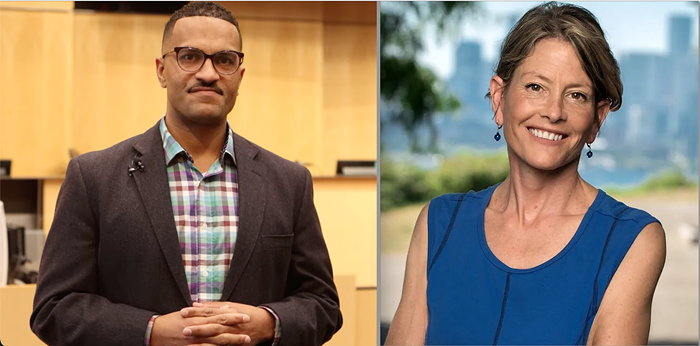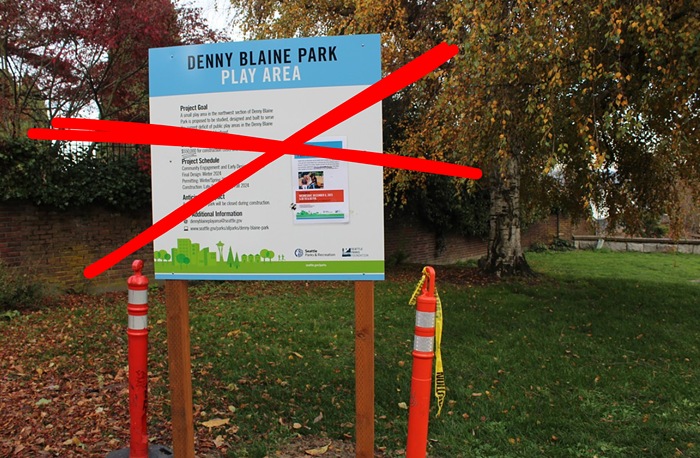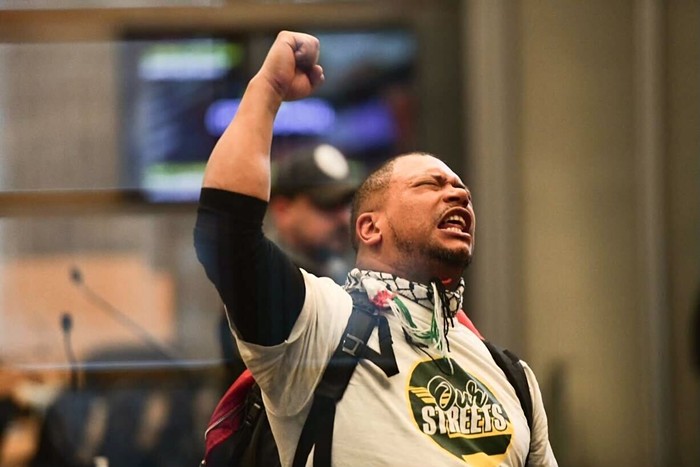In the next month, Seattle is supposed to set the terms of a contract to build the most expensive megaproject in state history—a 54-foot-wide tunnel under downtown—with the State of Washington as our partner. The city is relying on the state to be honest as we endeavor to build the widest deep-bore tunnel ever attempted, entrusting it to take every precaution (so the ground doesn't cave in, so the finances come through, so it's done on time). But already, before we sign this contract, it's becoming clear that the state hasn't been telling the truth.
One of the four groups expected to bid on the contract to build the tunnel dropped out in March. Then, on July 12, the city got word that one of the three remaining teams seeking to win the contract to build the tunnel had stopped work on its bid. The team's lead member, Kiewit Corporation, said the state's contract was "not compatible" with its business model.
Losing a bidder typically means losing the competitive pricing among companies vying for a contract, and in this case, it means potentially increasing costs for the estimated $4.2 billion project to replace the Alaskan Way Viaduct. "Logic tells me that when you only have two bidders, it is not as healthy a situation as when you have four bidders," says Thom Neff, a megaproject engineering expert brought in to double-check the state's work.
But it turns out that the Kiewit-led team didn't drop out on July 12. The state had actually known for months that its third bidder was no longer developing plans, says Ron Paananen, Alaskan Way Viaduct program administrator for the Washington State Department of Transportation (WSDOT). "They have expressed concern for some time of the terms of the contract," Paananen says. "They expressed that in the fall over the qualifications phase. They expressed concern again during the draft-proposal phase in February. They have been quiet ever since." He adds, "We had an idea of where they were at."
But the state didn't just know "where they were at." The state lied to the city.
"Approximately six weeks ago, we heard rumors that the Kiewit had dropped out," says Mayor Mike McGinn. "At the direction of the mayor's office, a Seattle Department of Transportation staffer contacted WSDOT and Ron Paananen to confirm or deny that rumor."
"They told us that there were still three teams in competition," McGinn continues. "We specifically asked if Kiewit was bidding or dropped out, and we were left with the impression that Kiewit was still an active bidder." City council member Mike O'Brien says he asked specifically about Kiewit in May and the state told him, "As far we know, they are on board," he says.
This deception wouldn't matter so much if it weren't for a provision in state law, passed in 2009, that says Seattle-area property owners must pay for all cost overruns on the project. The law also caps state spending at $2.8 billion. So if this not-quite-as-competitive-as-advertised bidding process goes forward and the project ultimately runs over budget—and authoritative research finds that 90 percent of megaprojects do run over budget, and tunnels run 34 percent over budget on average—the only plan in place is for Seattle to pay.
"I think it is unlikely that today's budget and today's schedule will be realized as it moves forward, because it's an extremely complicated infrastructure project in a major urban area with three particularly high-risk elements," says Neff. He cites soil conditions that "can't get any worse," high pressure under the water table, and the challenge of digging the widest deep-bore tunnel ever attempted.
"When state law provides that Seattle is responsible for cost overruns," says Mayor McGinn, "then the project requires a great deal of coordination. We expect that the state would be forthright with us about the status of the project."
Which brings up the question of how we got that law on cost overruns—and whether the state was being forthright then.
In January of 2009, Governor Chris Gregoire presented a nonbinding agreement with former King County executive Ron Sims and former Seattle mayor Greg Nickels to build the tunnel. Under the arrangement, each party would take responsibility for its own part of the project (Seattle would pay $937 million, the Port of Seattle would chip in $300 million, and the state would provide the remaining $2.8 billion). For instance, in this deal Seattle would rebuild the downtown seawall and take responsibility for cost overruns on its share of the work; the state would dig the tunnel and accept liability for cost overruns on its part of the project.
But the month after the agreement was signed, the legislature passed the law capping spending and requiring Seattle to pay for all cost overruns—including all cost overruns on the state's highway project. Many people say house Speaker Frank Chopp (who represents central Seattle) inserted that clause. But he says it wasn't him.
"The governor came forward with that language," says Chopp.
In other words, the governor promised that the state would pay for the tunnel's cost overruns on the state's part of the highway. But then, in a sneaky move, she reportedly maneuvered through a law that says Seattle would have to pay.
The governor also said that the legislature would let King County raise the motor-vehicle excise tax to pay for transit near the waterfront—transit that mitigates traffic on the waterfront, because the tunnel will handle less than half the vehicles of the current viaduct—but when a bill came to the governor's desk a few months later to allow more taxes for transit, she vetoed it.
And one week before the election last year—when the tunnel was a defining issue of the mayor's race—the state released a fiery simulation video of the viaduct collapsing in an earthquake. "We're simply complying with a public disclosure request and by law we have to release it," WSDOT's Paananen told KING 5 TV.
But that wasn't true—as is evident in three different ways. Paananen told the The Stranger that the state only had to provide the video to the citizen who requested it (not give it to the television station). Moreover, the video that the state gave away was a different video than the one the citizen requested. And lastly, reached the day after the video aired on the news, Elizabeth Campbell, the Magnolia neighborhood resident who filed the records request, said, "I haven't received the video."
So, jumping back to our current predicament, why did the state finally come clean about the bidder?
Paananen says state officials were waiting for a reporter to force them to divulge the information. ![]()


















